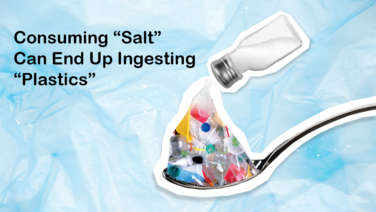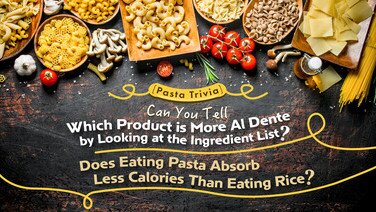Salt: More Than Just a Seasoning?
Besides seasoning, the components of salt can actually provide the nutrients the body needs! Sodium in salt is an essential element for maintaining normal body functions, helping to coordinate nerve transmission, muscle contraction, and electrolyte balance. However, consumers should be aware that excessive sodium intake increases the risk of high blood pressure, which can lead to heart disease, stroke, and kidney failure. The daily sodium intake for an average adult should be less than 2,000 milligrams (about 5 grams of salt, equivalent to 1 level teaspoon).
Additionally, salt contains iodine, which is also an essential trace element for the human body, helping to maintain sufficient thyroid hormone secretion and promote human growth and development. However, too little or too much iodine intake can affect thyroid function, potentially leading to goitre. The recommended daily iodine intake for an average adult is 120 micrograms (no more than 500 micrograms). Since the iodine content in salt is very low, some salts increase iodine content (i.e., iodised salt) to help the body supplement iodine.
Moreover, salt is also added to food as a preservative, fermentation regulator, and binder.
Salt and Its Origin
There are many types of salt on the market, including the familiar table salt and the recently popular natural sea salt and rock salt. What are the differences between them?
Firstly, they can be classified by their source:
Sea Salt
| Made from seawater, evaporated into crystals and then processed through multiple steps such as sun drying, crushing, washing, and drying. One type, also known as “Fleur De Sel,” is harvested by hand from the top layer of sea salt pools, and is snow white in colour. |
Roasted Salt
| Also made from seawater, using high-temperature roasting or sun drying methods to concentrate the seawater into salt. This type of salt is usually produced in areas with less intense sunlight, such as northeastern Japan, Okinawa, and the offshore islands of Tokyo. |
Lake Salt
| Some marine areas have been enclosed by land due to crustal movements and climate changes, turning into inland salt lakes. Lake salt is made from the water of these salt lakes, processed through sun exposure and harvesting. |
Rock Salt
| Rock salt is a mineral deposit formed millions of years ago due to crustal movements, obtained through drilling, blasting, excavation, and collection. Among various rock salts, the most familiar is Himalayan salt, known for its rose colour, hence also called rose salt. |
Some salts are processed and refined:
Table Salt/Cooking Salt | Made from brine or salt, the raw salt is dissolved to remove impurities and harmful pollutants, then recrystallised. |
Low Sodium Salt
| Usually consists of salt mixed with a certain amount of potassium salt to reduce sodium intake. |
Smoked Salt
| Made by smoking sea salt over a low charcoal fire, giving it a light grey-brown colour. |
Are natural salts like sea salt and rock salt really healthier than refined or processed salts like table salt? Not necessarily. According to a recent test of 39 types of salt on the market, some rock salts were found to have excessive lead content and total arsenic. Chronic exposure to lead through diet can affect the nervous system, cause anaemia, high blood pressure, digestive system symptoms, and kidney damage, and impair reproductive ability. Arsenic can cause acute poisoning, and long-term intake of inorganic arsenic can lead to cardiovascular diseases, lung cancer, and skin cancer. Consumers should be cautious.
Watch Video:
Pairing Ingredients Has Its Tricks
Although the main component of salt is sodium chloride, which does not taste much different when dissolved in water, different salts can have slightly different effects when used with ingredients. For those who pursue deliciousness, let’s see how to scientifically pair salt with ingredients to cook the best food!
Salt Type
| Pairing Suggestions | Reason
|
Table Salt
| ✔️Fried eggs with crispy edges | Table salt is mostly fine or powdered, easy to penetrate, and can be sprinkled a little on fried eggs for seasoning. |
❌Seasoning for steaks
| Since it easily penetrates into the inner layers of meat, causing dehydration and reducing meat juice, it is not suitable for seasoning steaks. | |
Sea Salt or Rose Salt
| ✔️Seasoning for steaks | Because of its coarser grains, it stays on the surface and does not immediately dissolve and penetrate into the inner layers of the meat, enhancing the flavour of the ingredients while preserving the rich meat juice, making the meat tender. These two salts also contain trace minerals, giving a more complex flavour than just saltiness. |
Smoked Salt
| ✔️Fatty meats (e.g., steak, pork belly) | The smoky flavour can neutralise the greasiness of the fat. |
✔️King oyster mushrooms | Some modern vegetarian dishes cleverly use smoked salt, such as king oyster mushrooms, to create a barbecue effect. | |
Fleur De Sel | ✔️High-end ingredients | Sprinkled on high-end ingredients such as foie gras, deep-sea fish, or beef, it can enhance the flavour. |
Eating Salt with Plastic?
Not only marine life can ingest plastic by mistake, but we also have the chance to ingest microplastics unknowingly in our daily diet. Since wastewater treatment systems cannot completely remove microplastics, they enter the ocean and even our food chain. In our salt tests, 20% of sea salt samples were found to contain microplastics! To avoid ingesting plastic, read the following extended reading articles to learn more about marine microplastic pollution and the importance of “plastic-free” self-rescue.
To learn more about the test results of salt, please refer to [Issue 522 of “Choice” Monthly: Over 60% of Salt Found to Contain Metal Pollutants, 20% of Sea Salt Found to Contain Microplastics].
Extended Reading: Learn More About Microplastics
What exactly are microplastics? What impact do they have on the human body? “Salt Turns into ‘Plastic’? Understanding the Keyword: Microplastics” answers your questions.
Disclaimer
This article has been translated using artificial intelligence (AI) technology. While efforts have been made to ensure the accuracy of the translation, it may not be perfect and could contain errors or inaccuracies. The original article at https://www.consumer.org.hk/tc/shopping-guide/trivia/2022-trivia-salt should be referred to for the most accurate information. The Consumer Council does not assume any responsibility for any error, omission, or ambiguity in the translated content. If you have any question or concern about the translation, please refer to the original article or consult a professional translator.









![[Baby Snacks Guide] Who Says Snacks Can’t Be Healthy?](/f/guide_detail/415742/376c212/bb%20snack.jpg)

